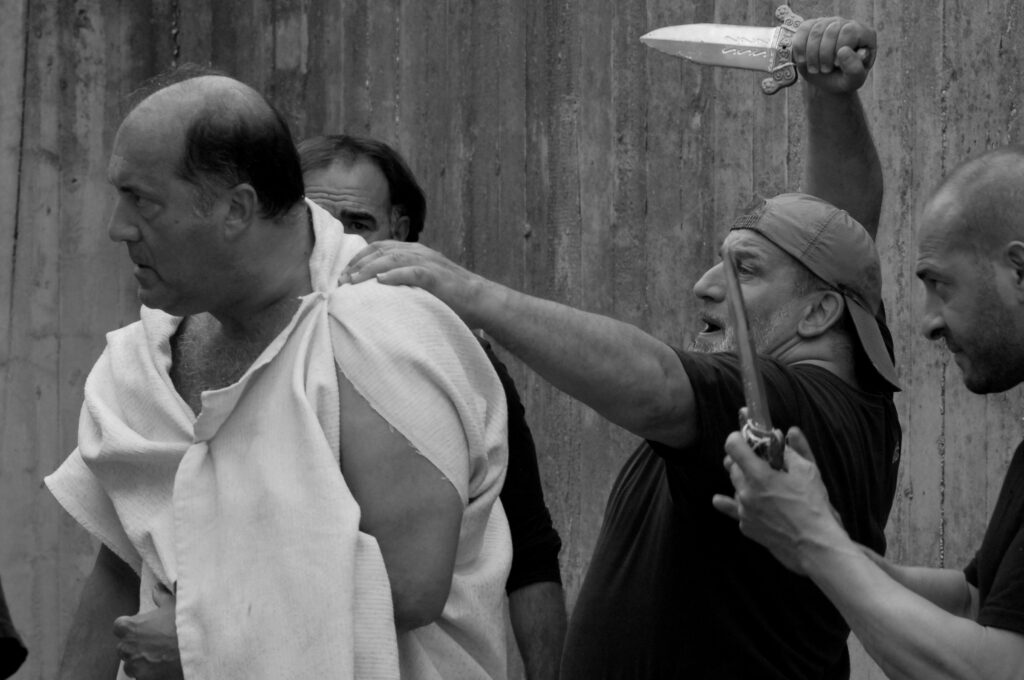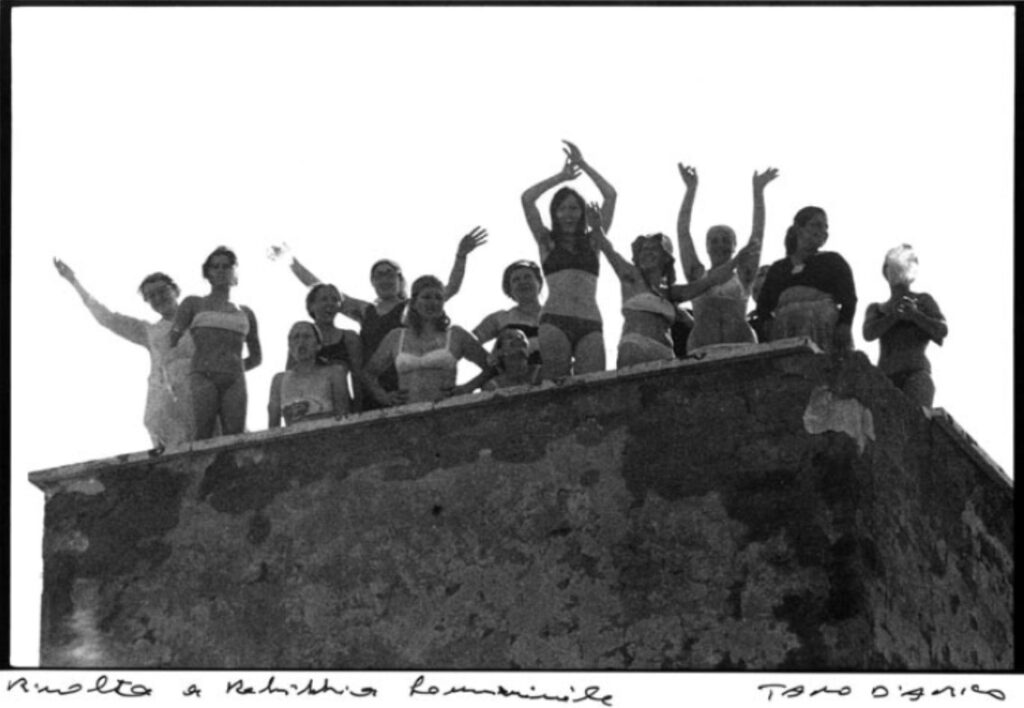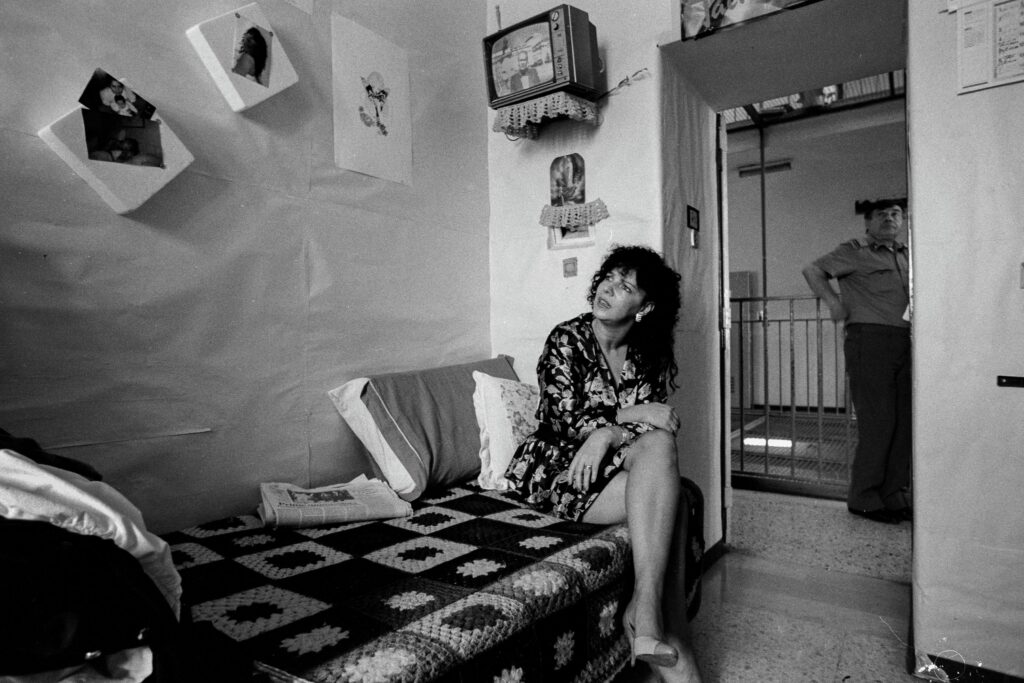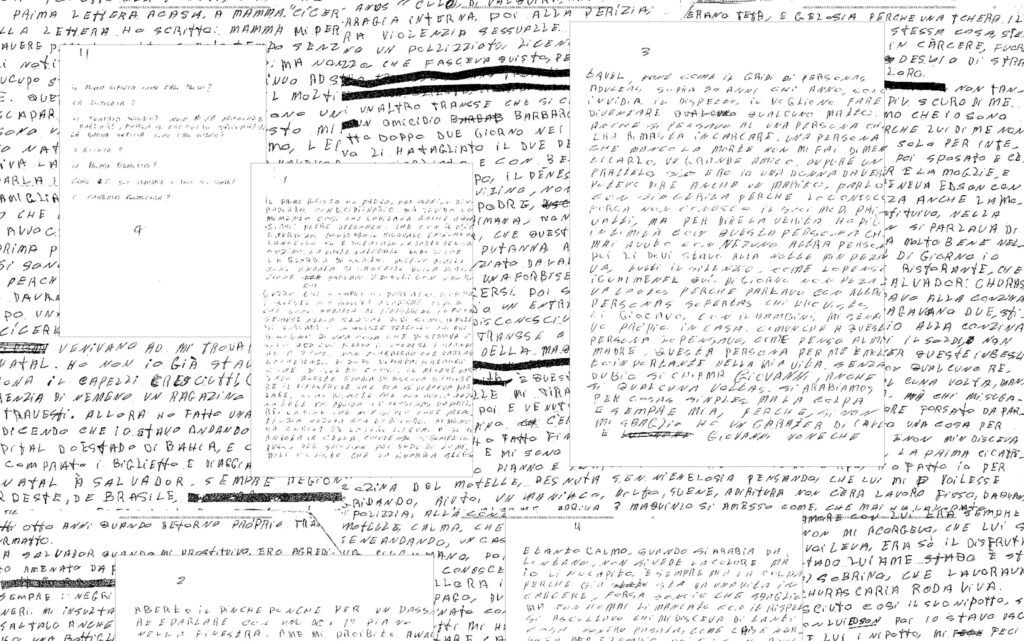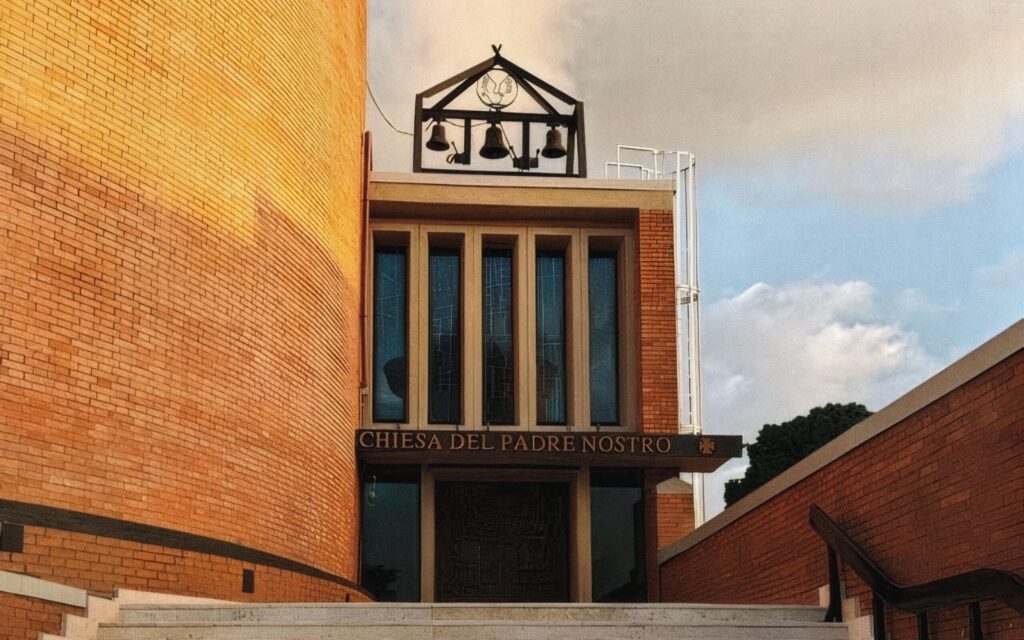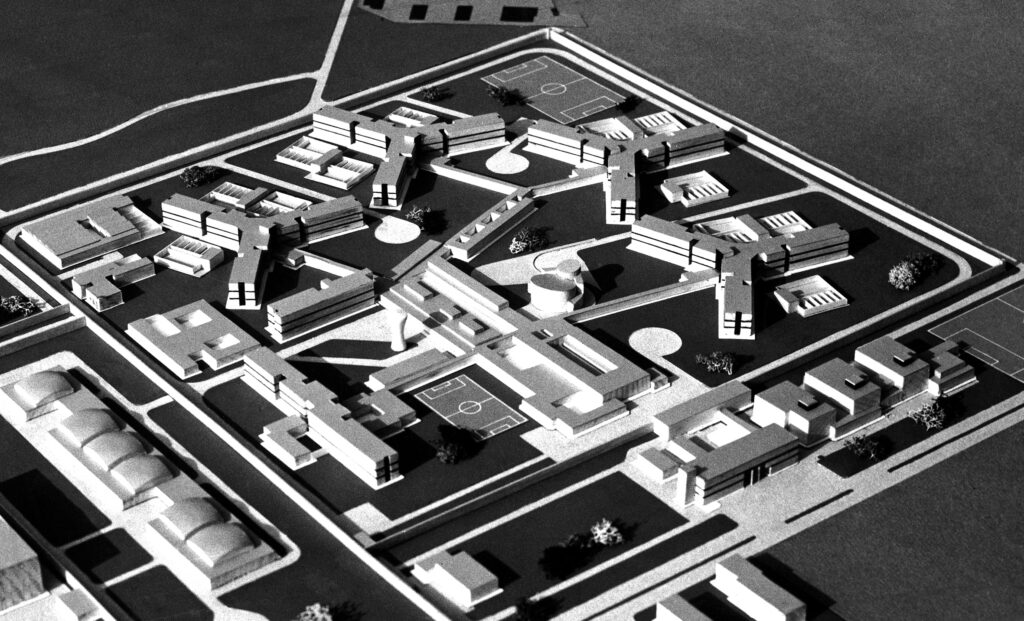The district of food and kitchens
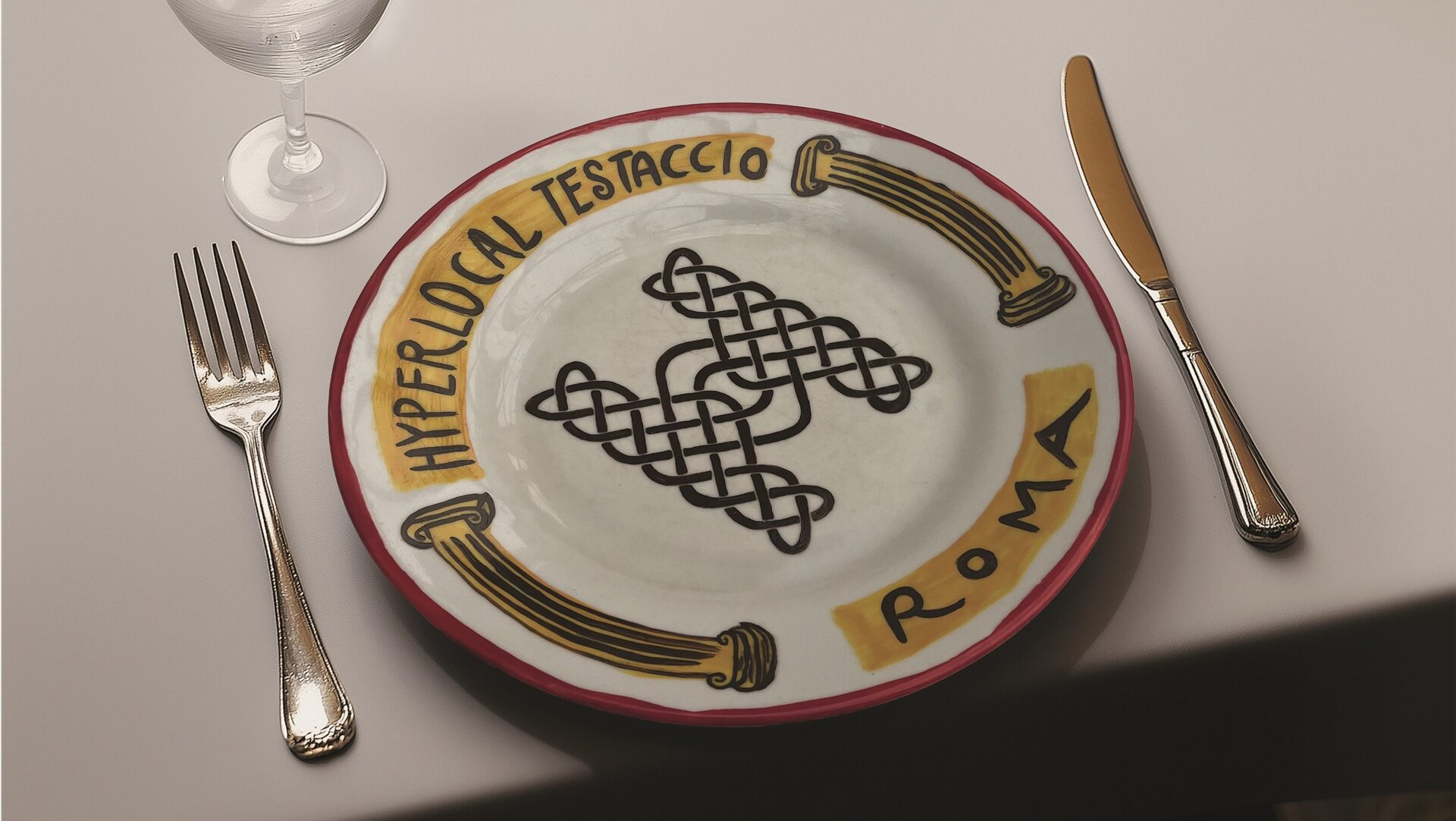
About ten years ago, chef Arcangelo Dandini told me in an interview that we only know one thousandth of the dishes of the Roman tradition: «One of the richest in the world, starting with Marco Gavio Apicio, passing through the Judaic-Roman cuisine, that of the Renaissance with Bartolomeo Scappi, cook of the Popes, till the last one, the pastoral Testaccio tradition which we know better, though only partially». The reason of this strong connection between a tradition and the neighbourhood can be quickly explained by the presence of the former public slaughterhouse in Testaccio; but the story of how an industrial plant was turned into a whole recipe book is much more complex and worth telling; starting, however, from its very centre in Via Dei Due Macelli, a stone’s throw from Piazza Barberini. This street takes its name from the two slaughterhouses it once hosted, one of which belonged to Duke Mattei. Until the very first years of the 19th century, meat distribution in Rome was ensured by small shops of private butchers, scattered in the alleys of the ancient city, within the Aurelian Walls. Another particularly important area was Campo de’ Fiori, which was provided by meat merchants from the Tuscia region: maremmani and cavallari (horsemen) who began to spread the cult of the Madonna della Quercia of Viterbo. This cult was also shared by several popes, so much so that in 1507 Pope Giulio II assigned the crumbling church of S. Nicola de’ Curte to the butchers of Rome to renovate and consecrate it to the Virgin Mary. The butchers (vulgarly known as beccai) used to pray the Virgin to protect their newly born confraternity, alongside the already existing university (in Rome, corporations of arts and crafts were called universitas). This bond was also strengthened by the rise of the Dominican friars of the convent in Viterbo dedicated to the arboreal virgin who, thanks to the continuous donations of land and livestock by devotees, had become one of the leading breeders within the papal territories. The church of Santa Maria della Quercia is still there today, in the shade of a big tree.
Between the square and the church there are still several historic butcher’s shops, the Venerable Company of Butchers is still active, but animals are no longer around. The animals for the small slaughterhouses once crossed the entire town, accompanied by a loud hubbub in which their calls mingled with the cries of people who joined this procession of beasts and butchers heading to their respective slaughterhouses, enjoying - and sometimes suffering - involuntary bullfights and blows between head and neck. Gioacchino Ersoch, in his report for what was to become the project for the new slaughterhouse in Testaccio, describes these parades as follows: «The cattle, and especially the untamed cattle of the Roman countryside, were brought into the city by the butteri on horseback, who using their voices and running backwards and forwards, guided and pushed them to their respective slaughterhouses. The oxen had long ropes tied to their horns, which they dragged along the ground, and which were used by the butchers to hold them down and drag they into the old shops. And here the whole thing became more serious as they had to force the beasts into the slaughterhouse, from which they also shunned because of the smell of butchered meat. This resistance caused in one part of the public feelings of ferocity, while other pitied the mistreatments of the butchers, who stirred up and forced the cattle to the point of receiving blows on the head, to the great jubilation of the people who applauded the blows». Screams, blood, entrails, faeces, stray animals looking for easy food: eating meat had become a matter of decency, health and public order. A limited one, since the pre-unification population did not even reach 200,000, but still severe.

So, we come to 1824 and Pope Leone XII, who decreed the building of a single public slaughterhouse: designed by architect Marinetti; construction by Gaetano Ferrarini from Bologna; the chosen area was that between Piazza del Popolo and the Tiber, very close to the Walls. This new facility did not solve all the problems; on the contrary, enlargement work was ordered to include the slaughter of sheep, goats and pigs, which was still carried out on a retail basis, especially by trippai and caprettai, and that of buffaloes, which was instead mostly a prerogative of the Jewish population. Over the years, the new slaughterhouse proved to be an unsuitable facility due to a number of problems: it was far from the railway and from the south-west area of the city from which most of the animals came; waste and sewage poured into the Tiber in the north of the city, with miasmas and decaying materials polluting the entire urban stretch towards the sea; the population of the Capital of the newly-born Regno d’Italia was growing fast; finally, a new urban development plan had set the goal of building a bridge - the future Ponte Margherita - exactly at the site of the plant, with the inevitable ravaging of the area in which the pigs were skinned. There was certainly no going back to bullfighting in the alleyways, so they choose to create a new facility in the southern part of the city, identified in the area between the Walls and Monte Testaccio, with the design assigned to architect Gioacchino Ersoch and finally approved on 21 July 1888. The building works proceeded rapidly, so much so that on November 28 of the same year the Pelanda (the area for skinning) was completed and the following day, at eight o'clock in the morning, the first five hundred pigs were already being distributed through the city. Testaccio’s modern and contemporary history thus began around the time of the unification of Italy, in order to solve a problem of food supply through modern ideas and methods, just as technological and modern were to be the industrial businesses the newly born district was to be devoted to. For this reason, its streets were named after explorers, pioneers and scientists, and the name Piazza dell’Industria was given to what would later become—and still is—Piazza di Santa Maria Liberatrice (the church was not built until the new century).
Testaccio’s connection with food is a thousand years old, as if the fate of this area had already been written by the gods of the Latin pantheon.
Testaccio’s connection with food is a thousand years old, as if the fate of this area had already been written by the gods of the Latin pantheon. Proximity to the river was key. Here, in fact, the harbour port called Emporium was built to replace the previous and smaller river port of the Foro Boario. It was commissioned in 193 B.C. by Marcus Aemilius Lepidus and Lucius Aemilius Paulus, who also created the Porticus Aemilia storage facility. Some ruins of the ancient port can still be seen along the banks of the Tiber, at the level of the square bearing this name, Piazza dell’Emporio. In addition to the Porticus—its remains can be seen among some apartment buildings in Testaccio—several ration storehouses were built to ensure the supply of the city: the Horrea Galbana, with its first construction of dating back to the consul Servius Sulpicius Galba (II century BC) and the restoration by the Emperor Galba (I century AD). Just imagine a city with around a million mouths to had feed, and products coming from an empire stretching from the Atlantic to the Middle East: a variety and mixture of smells, tastes and foods that even today would be dazzling. Heinrich Dressel, an archaeologist active in the second half of the 19th century, analysed the engravings on the amphorae in Testaccio and discovered, for example, that oil was imported in large quantities from Spanish Betica (present-day Andalusia, more or less). Once emptied, the amphorae could not be reused due to the deterioration of the residues, which quickly turned rancid. The destroyed remains were thus piled up in an area not far from the port, in a precise order and in such quantity (an estimated fifty million) that over time they amount to a thirty-six metres high hills with a circumference of about one kilometre. Today there are dwellings and dense vegetation on its surface, and cavities hosting caves with a centuries-old history and the most varied uses. A gigantic anthropic operation, which could not fail to become the distinguishing feature of the whole area, as well as its toponymic identifier: Testaccio, from the Latin testaceum, an adjective deriving from the noun testa, which generically referred to a terracotta artefact.
The empire wore out, the city shrank and even Testaccio lost its importance because fewer and fewer goods and commodities were needed. For centuries, the area became once again a garden within the walls, cultivated with vegetable gardens and vines, used for picnics and drinking and, for a large stretch, the site of Carnival Ludi (games) when it was crowded for the ring jousts, the equestrian poles and the hunt for pigs and bulls thrown with six carts from the top of the Monte. Frightened animals would start running far and wide, before being skewered by horsemen and commoners. Centuries later, it was still cattle that played a central role and gave Testaccio its current identity and physiognomy as a neighbourhood. The master plan drawn up by the municipal engineer Alessandro Viviani in 1873 imagined a new industrial Rome here. Land was purchased, the urbanisation plan was completed with the finalising of the new municipal slaughterhouse between the Tiber and the Walls, and building began to provide housing for the new working class. At first the construction works were carried out badly, although the projects were signed by Ravinetti, Magni and especially Carlo Tonelli, proposing distorted visions of the block.

The first area to develop was around Piazza Testaccio (then Piazza Mastro Giorgio), between Via Marmorata and Via Galvani. Around the square, Tonelli created some sunny buildings with airy volumes, but along Via Marmorata the blocks of flats, built with the clear purpose of obtaining as many dwellings as possible, became stifling and dark. The post-unification building fever immediately resulted into bankruptcies and speculation and, around 1890, the difficulties became a full-blown crisis. In the meantime, the ownership of lots and land also changed: private citizens Marotti, Frontini and Geisser, the first builders in the district, were replaced by the Istituto Romano di Beni Stabili, the Cassa di Risparmio and the Banco di Napoli. After its foundation under the so-called Legge Luzzati (Luzzati Law), the Istituto Case Popolari also emerged in 1903. New houses were built once again, this time with moderation and discernment, and were commissioned to some of the designers who defined the city’s current architectural style: Giulio Magni, Innocenzo Sabatini, Quadrio Pirani, Camillo Palmerini, right up to Carlo Broggi’s exotic, terraced block of flats in Piazza dell’Emporio. In the meantime, the Church of Santa Maria Liberatrice was founded in the district, located exactly at the intersection of the two grids that make up the layout of the district; the Mercati Generali (a few hundred metres further along the via Ostiense) and the Stadium with its four stands painted yellow and red.
The kind of district Testaccio was like in those years is meticulously described in a survey published in 1912 and which has then become historic and memorable, Come vive il popolo a Roma: saggio demografico sul quartiere Testaccio (How the people live in Rome: a demographic essay on Testaccio district). It was carried out by Domenico Orano, an intellectual, philanthropist and councillor in the council of Mayor Ernesto Nathan, who dedicated his studies and his life to the district, also forming the Committee for Economic and Social Improvement and devoting to the creation of a popular library, a women’s recreation centre (dedicated to Anita Garibaldi), a movie theatre, a clinic and other activities. The portrait of the neighbourhood painted by Orano is a gloomy one, almost Dantesque, because of capitalist social and economic exploitation, and because of the many class vices that become more shackles to the feet. However, this did not prevent Orano from maintaining an unflinching faith in the people and their fundamental strength and goodness, which only needed to be recognised and nurtured.

«Testaccio is an essentially working-class neighbourhood. For the Romans, it is a place for the underworld, a house arrest for criminals. A good bourgeois speaks of it only with terror and does not hide his aversion to the very thought of having to live there. This prejudice, because Testaccio is, compared to other working-class neighbourhoods in Rome, better [...] the soul of the people vibrates strongly in Testaccio, because the butchers of the capital meet there and many of those commoners live there, proud of their rebellious spirit, impulsive in their actions, quick in their decisions, violent in their actions, sentimental in their love, fierce in their hatred, proud in their gestures, disdainful for danger, easy to befriend and to avenge, to shake hands and to stab».
At the time of the survey, Testaccio was still part of the Rione Ripa and, according to Orano’s calculations, over 9.000 people lived there, mostly Romans, with a fair percentage of people from Abruzzo, the Marche, Umbria and Emilia: «The first nucleus of the district was formed by the Roman workers of the slaughterhouse, once the unruly inhabitants of the Rione Regola, and the leather tanners, now scattered between the extreme edge of the Marmorata, the San Paolo gate and the district properly called delle Concie, just outside the same gate». It is essentially a proletarian and working-class district, where the percentage of bourgeoisie did not reach 6% and is represented by “industrialists” and shopkeepers. The Slaughterhouse takes the lion’s share with about 2,000 people who gravitated towards the plant every day, including «master gravediggers, permanent and temporary shop boys, tripe sellers, liver sellers, fat sellers, brokers, cattle dealers, matchmakers, herdsman», plus staff including «veterinarians, broomers, caretakers, doormen and administrative employees». In Testaccio there are also small businesses for working wood, iron, marble, flints for the streets, tile factories, a car factory, a glassmaker, tanneries and other minor businesses. Other activities are still around the district, but those who work there live in Testaccio (Orano has about 2,750 workers in this category). «The Mattatoio has a powerful influence on the life of the neighbourhood and gives the working mass a very special and unique character», he remarks. Except for a smaller, but not negligible, percentage of wretches who survive among caves, vegetable gardens and shacks, most of the population lives in houses inside the newly constructed buildings. And they live there badly, in perpetual overcrowding and often in sublet: «There are 635 houses where 2 families live, 67 where 3 live, 14 where 4 live, 5 where 5 live», and so on.
This is the fundamental melting pot where much of the modern Roman recipes will take their shape, where cuts of the quinto quarto given to the slaughterhouse workers or snagged somewhere are cooked.
Orano sneaked into each of them to carry out his survey, finding “things that you people wouldn’t believe”: «I saw beds in the kitchens, in the entrance hallways, in the passages, in the hallways leading to the loos, in the loos themselves, where they take up the whole length of the room. In via Vanvitelli 4, apartment number 29, the subletting extended not only to the kitchen but also to the loo. In Via Mastro Giorgio 81, apartment number 205, the dwelling consisted of a large ground kitchen in which eight people slept: wife, husband and six children». It was a vicious circle made up of landlords overcharging the tenants who sublet their apartments, which in turn was passed on to the poorest sub-tenants. A daily routine of domestic spaces that was chaotic, to say the least, between refusals to clean other people’s dirt and a search for privacy that leads to even bedrooms being turned into bathrooms, with excrements stagnating for long periods in basins and pits: «The toilets are more often than not unusable, semi-dark and with an absolute lack of water [...] the kitchen becomes a sort of rubbish dump, all cluttered with beds and various objects, used at the same time as a resting place, as a kitchen and dining room, with no possibility of tidiness and cleanliness, a nest of animals that come and go undisturbed through the sink duct». Not to mention the courtyards full of garbage from all the tenants, the acrid smell of oil and tallow for lighting, and other various vile things: «Filth is the true ruler of social housing». Even when the kitchen is used as such, things are not any better: «Food is frequently seasoned in one large dish and often left in the same pan it was cooked in. It is placed in the middle of the table and all family members draw from it as if from a single source. [...] the same fork and spoon often serve several people. Drinking from the same container is an ancient custom. In the family, white glass bottles are replaced by flasks».

It is not surprising that in this total domestic chaos, much of the post-work life of the average Testaccino (the Testaccio’s inhabitant) takes place in the osteria, a place for eating, getting drunk, playing, but also a place to have meals together with the whole family, alternating with the popular canteens such as the Cucina Economica of the Circolo San Pietro: «For the urge to breathe freely, for the desire to have, even for a few hours, the illusion of a more comfortable and less sad life, it is quite natural for workers to go and to seek at the tavern that comfort they can’t find at home [....]. Workmen frequently meet their wives and children at the tavern for lunch or dinner. The wife brings with her the food which is cooked by the innkeeper or directly by the woman herself while the innkeeper is only asked for the wine [...]. Given the dwellings where there are sub-tenants the tavern, if it did not exist, it would have to be invented». This is the fundamental melting pot where much of the modern Roman recipes will take their shape, where cuts of the quinto quarto (lit. “the fifth quarter”, the offal of butchered animals) given to the slaughterhouse workers or snagged somewhere are cooked, alternating with soups, vegetables from the gardens and markets, and even snails, eels and frogs from the river (have a look at the famous Roman recipe book by Ada Boni, also from the early 20th century). «A worker does not spend an average of less than two hours a day at the Osteria [...] wine drinking is common as wine is the true food of the people [...] there are 38 osterie and trattorias where wine is sold and the wine consumed goes on average from 11,000 to 12,000 litres a day, with each innkeeper also discharging an average of about one barrel (960 litres) a week. Add to the 38 taverns and trattorias, 11 food shops and 2 private ones and you have 51 wine shops, without considering the Grotte del Monte Testaccio, which house 13 general wholesale warehouses, but where wine is often sold by the half-barrels, by quarters and flasks». A penchant for drinking that starts to show early in the morning: «There is no worker in Testaccio who, before going to work and often on an empty stomach, does not drink the “palletta”, a little jug of liquor. The so-called schizzo (acquavite and rum) in the coffee is also common for women». Widespread alcoholism, in short, which they tried to contain with tragicomic - and extremely contemporary - results, by imposing prohibitions on serving: «In a working-class neighbourhood, it is very difficult to determine where the osteria ends and the trattoria begins. The innkeeper is supposed to be the tavernkeeper who sells wine but does not cook. But all innkeepers cook [...] the difference being only in the name of the licence and the tax they pay. In Testaccio, in fact, many taverns are kept with more efficiency, than trattorias. Thus. this curious fact occurs. Workers leave the osteria and becomes customers in the trattoria a few steps away from the first one, and they drink and gamble freely until eleven o’clock, and often until midnight and one o’clock, before the eyes, and in the company, of those same law enforcement officers who, if they found them in the neighbouring osteria, would have to report their violation»

Orano analyses in depth the diet and nutrition habits of the inhabitants of Testaccio, turning it into a double ground for a public outcry. On the one hand, in fact, the lack of resources forces the population to stock up only at the neighbourhood markets with very low-quality products; on the other, there is the phenomenon of usury by the merchants themselves, who sell essential goods with interests and act in a corporatist and threatening manner towards those who try to sell at lower prices: «The foodstuffs are chosen over and over again. The first selection is upon the interceptors for high-quality “hotels” and the richest religious congregations; the second one, which goes to the resale markets in the city centre and the shops, is that which benefits the wealthy, bourgeois class. The third forms the second quality waste and ends up in endless rivulets for the feeding of the working class [...] Testaccio is cut off from the rest if the city by the Lungo Tevere running from the Ponte Palatino bridge to the Via Marmorata, and it takes about thirty minutes to get to the nearest retail market in Piazza Montanara. In order not to waste time or spend money on transport, the inhabitants must forcibly take advantage of the goods that are sold in the neighbourhood itself». The survey also meticulously lists the most common meals and recipes, which outline a general picture of dietary disorder, worsened by the abuse of wine: «For hundreds of families, the “minestra al battuto” (composed of water, lard, herbs, preserves with pasta, lunch and dinner) is a daily staple. [...] Generally the minestra col battuto is made of pasta with potatoes, pasta with cabbage, rice and potato, more rarely pasta with beans. Sometimes vegetables (artichokes, cabbage, turnips) replaced the pasta. Meat is a luxury—an irony in the district where the Slaughterhouse is located—and it is served only on special occasions and always, or almost always, in offal [...]. The most tempting foods for the lower class are pork (from October to March) and lamb, which in Rome is eaten until after Easter. «When the pork is missing, the people feel bad», I have heard repeatedly in the district’s taverns. And the pork is eaten in the form of chops, ribs, coagulated blood, trotters and knee-highs [...]. The working class tries to achieve two conflicting results: to spend as little as possible and to eat their fill», which is why «the two soups, with battuto and oil, and pasta are the basis of the workers’ diet». Those working at the Slaughterhouse fared a little better, both in terms of wages and the ease of finding meat daily: «Pagliata is the favourite food of the families of the Mattatoio workers. This is a dish sought after by butchers, cowherds and gourmets [....] some categories of workers at the Campo Boario and the Slaughterhouse are the best fed. They never lack meat and their economic condition—given their needs—is equal to the best of the bourgeois class».
Testaccio essentially remained a sort of intramoenia working-class suburb, with the Slaughterhouse as its beating heart and the main legacy of the industrial momentum, still visible in the urban organisation and housing rent.
Overcrowding, poor food, abuse of wine, unhygienic conditions, in addition to promiscuous sexual practices under the influence of alcohol, gambling, debts to pawnshops and outright usury. An unruly situation to say the least, which Orano himself tried to contain with his political and philanthropic activities in the district, abruptly interrupted in 1918 due to the Spanish flu.
One hundred years ago there was already the essence of the neighbourhood to come, which would not change much. Testaccio remains essentially a district without factories, partly because they are moved along the Via Ostiense and to other districts of Rome, and partly because under Fascism the city is conceived as an administrative and power pole, definitely opening up to the service industry, as had happened during the Unification of Italy. The period following the Second World War therefore did not generate any great innovations: Testaccio essentially remained a sort of intramoenia working-class suburb, with the Slaughterhouse as its beating heart and the main legacy of the industrial momentum, still visible in the urban organisation and housing rent. The Slaughterhouse closed in 1975 and this marked a new phase: from the Nicolinian summers to the scuffle for its redevelopment, a puzzle that still doesn’t have all the pieces in place; from the decades of deep night clubbing to the ZTL and the relocation of the market from Piazza Testaccio to the area in front of the Slaughterhouse, a move that brought its many kitchens back to the heart of the neighbourhood. Food never left this place, quite the contrary. It has travelled and keeps on travelling through the multicultural frequencies of experiences such as those of Ararat Centre and Villaggio Globale; in those restaurants that renew and reinvent the tradition of the fagottari, the osterie, the beccai and the quinto quarto. Food is described by food writers who fall in love with it; it goes from the city’s first Roma Club to a centuries-old institution such as Circolo San Pietro, it is (re)taken to the streets and squares; it moves through bakeries, dwellings and even caves, reminding us that nutrition needs time, refinement and seasoning; it resurfaces in the memories of political activism that created new forms of social relationships through food. A neighbourhood and its kitchens, in a city that has never ceased to meet around a table and invite whoever set foot within its borders to have a sit, whether it is the first or the hundredth time.
